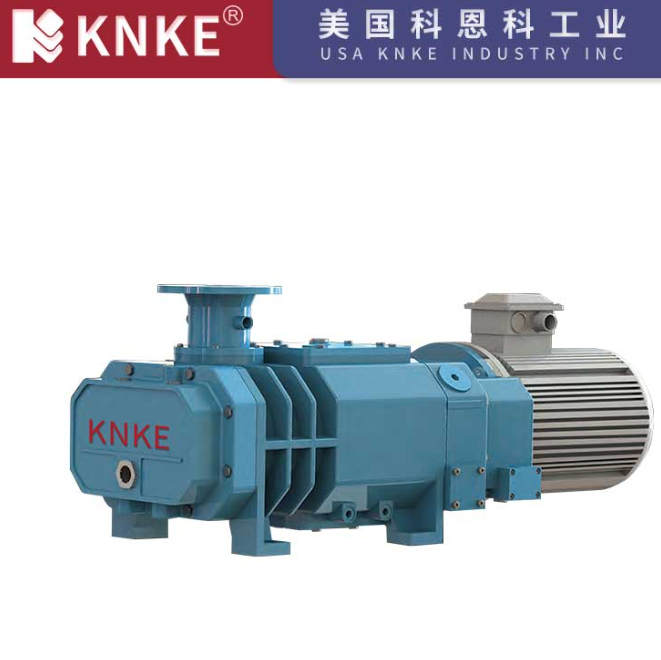Common Faults and Solutions of Vacuum Pumps
In industrial production, vacuum pumps are vital. Their proper operation directly impacts efficiency and quality. But with long-term use, they often develop faults. Knowing these faults, their causes, and fixes helps businesses resolve issues fast and cut losses. Here’s a breakdown of common vacuum pump problems.

Reduced Vacuum Degree
Reduced vacuum ranks among the most common faults. It harms the pump’s ability to create a vacuum.
- Causes: Low or poor-quality oil; aging oil seals; hard objects entering and wearing the pump body; insufficient cooling water flow; misalignment of the rotor due to poor assembly.
- Fixes: Check oil levels and quality regularly. Add oil if low; replace oil if it’s degraded. Swap out old oil seals. Remove any hard objects and repair or replace worn pump parts. Ensure cooling water flows properly. Reassemble the pump to realign the rotor.
Pump Failure to Run or Seizure
If the pump won’t run or seizes up, production stops.
- Causes: Motor overload; broken springs; poor assembly; damaged filters; overly tight fit between the shaft and sleeve; a broken cross joint in the shaft.
- Fixes: Check the motor to avoid overload. Replace broken springs and filters. Reassemble the pump correctly. If the shaft/sleeve fit is too tight or the cross joint is broken, replace the faulty parts.
Increased Noise
Loud operation disrupts the work environment and often signals issues.
- Causes: Bearings short on oil or damaged; worn impellers; loose fasteners; foreign objects in the fan; broken springs.
- Fixes: Oil bearings regularly; replace them if damaged. Swap out worn impellers. Tighten loose fasteners. Remove foreign objects from the fan. Replace broken springs.
Oil Leakage
Oil leaks waste oil and can damage the pump or surrounding area.
- Causes: Aging oil windows, tank gaskets, or motor shaft seals; cracked oil windows; failed O-rings; felt pads absorbing too much oil.
- Fixes: Replace aging seals (oil windows, gaskets, shaft seals, O-rings). Swap out cracked oil windows. Tighten screws to plug leaks. Drain excess oil from felt pads.
Difficult Startup
Trouble starting delays production.
- Causes: Cold oil; poor lubrication in the pump; degraded or mixed oil; trapped air in the pump chamber; too much oil in the chamber.
- Fixes: Warm the pump if oil is too cold. Check the oil circuit to ensure proper lubrication. Clean out oil residue and replace bad or mixed oil. Release trapped air from the chamber. Adjust oil levels to prevent overfilling.
Failure to Reach Ultimate Vacuum
Not hitting the required vacuum level means the pump can’t meet process needs, hurting product quality.
- Causes: Leaks in pipes, the system, or pump parts; a foreline pump with low ultimate pressure; poor-quality lubricating oil; faulty oil seals; small-diameter pipes restricting flow.
- Fixes: Inspect the system for leaks and repair them. Fix or replace the foreline pump to boost its ultimate pressure. Use better oil and new oil seals. Upgrade to larger pipes to improve flow.
Other Common Faults
- Overheating or smoking: This may stem from a smoking mist reducer, hot pump/motor, blocked oil lines, or dry friction (no oil in the chamber). Check inlet pipes and joints. Clear oil line blockages. Ensure the chamber has enough oil.
- Abnormal motor startup or overheating: Foreign objects in the pump, low motor voltage, or missing phases can cause this. Remove debris. Check power supply to ensure proper voltage and fix phase issues.
- Cavitation: Damaged impellers (pitting, holes, or broken blades) often cause this. Replace the damaged impeller immediately.
- Water in water ring pump pipes: Leaky water-vapor separators let water collect and flow back into the pump. Repair the separator to stop leaks.
These are the most common vacuum pump faults and their fixes. Always assess the specific situation to diagnose and resolve issues. To reduce faults, maintain the pump regularly. Catching problems early keeps the pump running and production on track.
